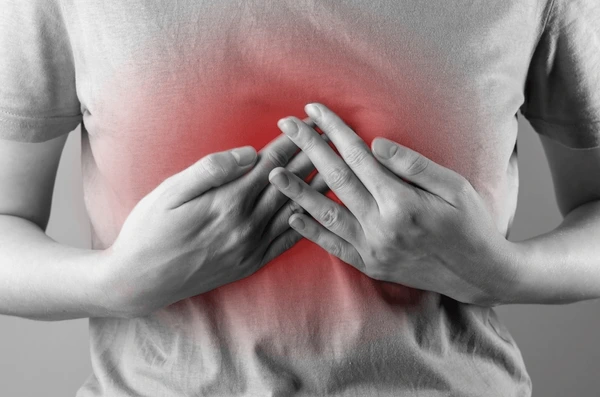
 Instagram
Instagram
Is Body Dysmorphia an Eating Disorder?


Related products

Introduction
The intersection of body dysmorphia and eating disorders presents a complex challenge in both understanding and treatment. Body Dysmorphic Disorder (BDD) and eating disorders, though distinct in clinical diagnosis, often share overlapping symptoms and psychological patterns. This article delves into the intricate relationship between these two conditions, examining their definitions, symptoms, and impacts on mental health. The central question it addresses is whether body dysmorphia can be categorised as an eating disorder, and how these conditions interrelate.
What is Body Dysmorphia?
Body Dysmorphic Disorder is a mental health condition characterised by an obsessive focus on perceived flaws in one's appearance, which are often unnoticeable to others. According to the Diagnostic and Statistical Manual of Mental Disorders, 5th Edition (DSM-5), BDD involves time-consuming preoccupations with what one perceives as physical defects. Dr. Emily Harris, a consultant psychiatrist, notes, "Patients with BDD often exhibit repetitive behaviours like mirror checking or excessive grooming as a response to their anxiety about their appearance."
Psychological and Emotional Aspects
The psychological impact of BDD is profound. Sufferers may experience severe emotional distress, anxiety, and shame about their appearance, significantly impairing their daily functioning. Dr. Harris adds, "The emotional turmoil caused by BDD can lead to social isolation, as individuals may avoid social interactions for fear of judgment about their looks."
Prevalence and Demographics Affected
BDD affects approximately 1-2% of the general population, with a relatively equal distribution among men and women. It typically begins in adolescence, a developmental stage where physical appearance becomes increasingly salient. Dr. Mark Griffiths, a clinical psychologist, states, “Understanding the demographics affected by BDD is crucial for early intervention and treatment, especially among teenagers who are more vulnerable due to societal and peer pressures.”
Exploring Eating Disorders
Definition and Types of Eating Disorders
Eating disorders, encompassing Anorexia Nervosa, Bulimia Nervosa, and Binge Eating Disorder, are characterised by an unhealthy preoccupation with food, body weight, and shape, leading to dangerous eating behaviours. These conditions, as outlined in the DSM-5, involve significant disturbances in eating habits and severe distress about body weight or shape.
Symptoms and Warning Signs
The symptoms of eating disorders vary but commonly include excessive dieting, binge eating, purging, and an intense fear of gaining weight. Dr. Laura Hill, a leading eating disorder specialist, explains, “The warning signs of eating disorders can often be overlooked, as they can manifest as normal dieting behaviour. It is the severity and duration of these behaviours that signal an underlying disorder.”
Impact on Physical and Mental Health
Eating disorders carry serious physical health risks, including malnutrition, heart conditions, and gastrointestinal problems. They also have a significant psychological impact, often co-occurring with conditions such as depression and anxiety. According to the National Eating Disorders Association, eating disorders have one of the highest mortality rates of any mental disorder, underscoring their severity.
Comparing Body Dysmorphia and Eating Disorders
Similarities in Symptoms and Psychological Underpinnings
There is a notable overlap in the psychological aspects of BDD and eating disorders, particularly in the obsessive focus on body image and the associated anxiety and distress. Both conditions involve a distorted perception of one's body and a persistent dissatisfaction with one's appearance. Dr. Harris states, “The similarities in the psychological profiles of BDD and eating disorder patients suggest a shared underlying vulnerability related to body image.”
Differences in Clinical Diagnosis and Primary Concerns
Despite their similarities, BDD and eating disorders are distinct in their clinical focus. BDD concentrates on specific body parts, while eating disorders centre around weight and food. As Dr. Griffiths points out, “While both BDD and eating disorders involve body image concerns, the primary preoccupation in eating disorders is weight and food, as opposed to specific physical features in BDD.”
This exploration highlights the complexities in distinguishing between body dysmorphia and eating disorders. While they share common threads in terms of psychological impact and focus on body image, their clinical presentations and primary concerns diverge significantly, prompting a need for differentiated approaches in diagnosis and treatment.
Interconnection between Body Dysmorphia and Eating Disorders
Body Dysmorphic Disorder and eating disorders, particularly those involving a preoccupation with thinness, can often co-exist or one may lead to the other. Individuals with BDD, fixated on perceived bodily imperfections, may resort to disordered eating patterns in an attempt to alter their appearance. Dr. Sarah Park, an expert in eating behaviors, explains, "The line between BDD and eating disorders can blur when the fixation on a particular body part leads to restrictive or binge eating behaviors as a misguided solution."
Case studies reveal that patients diagnosed with BDD can develop eating disorders as a consequence of their body dissatisfaction. For instance, a study in the "Journal of Clinical Psychology" outlined the case of a young woman with BDD focused on her stomach area, who subsequently developed anorexia nervosa in her efforts to alter this body part.
Treatment and Management
Treatment Options for Body Dysmorphia
Treatment for BDD typically involves Cognitive Behavioural Therapy (CBT), which focuses on altering negative thought patterns and behaviours associated with the disorder. Selective Serotonin Reuptake Inhibitors (SSRIs) have also been effective in managing the symptoms. Dr. Laura Winston, a psychiatrist specializing in BDD, suggests, “CBT can help patients challenge and overcome the distorted beliefs they hold about their bodies.”
Treatment Options for Eating Disorders
Eating disorders are commonly treated with a combination of psychotherapy, nutritional education, and, in some cases, medication. Therapeutic approaches like CBT and Family-Based Treatment (FBT) are effective, particularly for adolescents with anorexia nervosa. As noted by the National Institute for Health and Care Excellence, a multidisciplinary approach involving dietitians, psychologists, and physicians is crucial for effective treatment.
Importance of Holistic Approach in Treating Co-existing Conditions
When BDD and eating disorders co-exist, a holistic treatment approach is essential. This involves addressing both the specific body image concerns of BDD and the eating pathology. Dr. Winston asserts, “An integrated treatment plan is vital in cases where BDD and eating disorders overlap, as addressing one without the other may lead to incomplete recovery.”
Challenges in Diagnosis and Treatment
Overlaps and Misdiagnosis
The symptomatic overlap between BDD and eating disorders can lead to misdiagnosis or underdiagnosis of one condition. For instance, a focus on weight in BDD can be mistakenly diagnosed as an eating disorder, overlooking the broader scope of BDD.
Social and Cultural Factors Influencing Both Conditions
Cultural and social factors, including societal beauty standards and the influence of social media, play a significant role in the development of both BDD and eating disorders. The pressure to adhere to idealised body standards can exacerbate the symptoms of both conditions.
The Role of Media and Body Image in Society
The media’s portrayal of ideal body types has been linked to body dissatisfaction and the development of body image disorders. Dr. Park notes, “The omnipresence of media images showcasing unrealistic body types can fuel both BDD and eating disorders, making it a public health concern.”
In summary, the intricate relationship between body dysmorphia and eating disorders highlights the need for careful diagnosis and a comprehensive treatment approach. The influence of societal and cultural factors further complicates this relationship, necessitating a broader understanding and public awareness of these conditions.
Personal Stories and Recovery Journeys
Real-life Experiences of Individuals Dealing with Either or Both Conditions
Personal narratives provide invaluable insights into the lived experiences of those dealing with Body Dysmorphic Disorder (BDD) and eating disorders. For instance, Emma, a 28-year-old woman, shared her journey through the entwined paths of BDD and anorexia. Initially preoccupied with her nose's appearance, Emma's concern soon escalated to her body weight, leading to restrictive eating patterns. Her story underscores the complexity of experiencing both conditions simultaneously.
Strategies That Helped in Their Recovery Process
Key to Emma's recovery was a combination of Cognitive Behavioural Therapy (CBT) and medication, alongside a support group specifically tailored for BDD and eating disorders. She credits her progress to the therapy's focus on cognitive restructuring and the support group's shared experiences and understanding. Emma's journey illustrates the power of integrated treatment approaches and peer support in navigating the recovery process.
Conclusion
This article has explored the intricate relationship between body dysmorphia and eating disorders. While distinct in their clinical definitions, the overlap in psychological patterns and symptoms is evident. The importance of understanding each condition, their interconnection, and the influence of societal factors has been highlighted.
The co-existence of BDD and eating disorders presents unique challenges in diagnosis and treatment. Recognising the nuanced distinctions and similarities between these conditions is crucial for effective management. The personal stories shared in this article shed light on the complexities of experiencing and recovering from these intertwined disorders.
For those experiencing symptoms of body dysmorphia or an eating disorder, it is vital to seek professional help. Early intervention can significantly improve outcomes, and a range of effective treatment options are available. Moreover, societal awareness and understanding of these conditions must be enhanced to reduce stigma and promote early support and intervention.
In conclusion, the journey through body dysmorphia and eating disorders is deeply personal and often challenging. However, with the right support and treatment, recovery is possible. Encouraging open conversations about these conditions, increasing public awareness, and advocating for comprehensive care are essential steps in supporting those affected.































 Rated Excellent by 26,523+ Reviews
Rated Excellent by 26,523+ Reviews